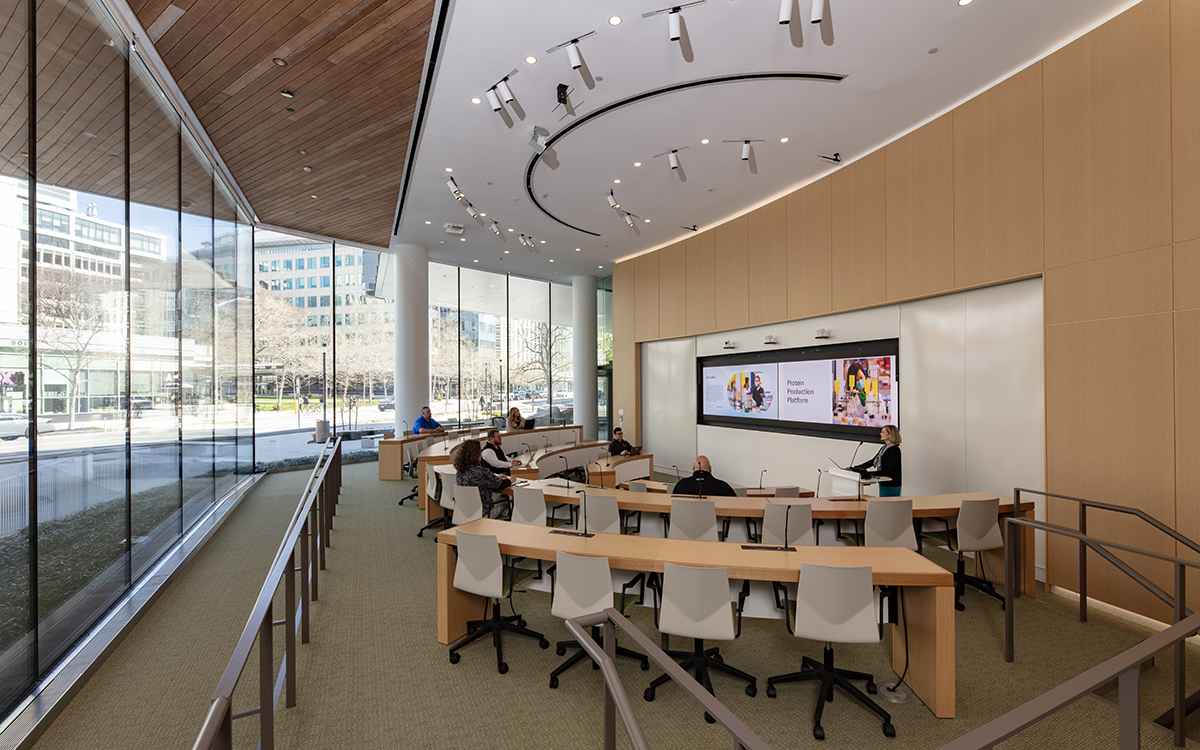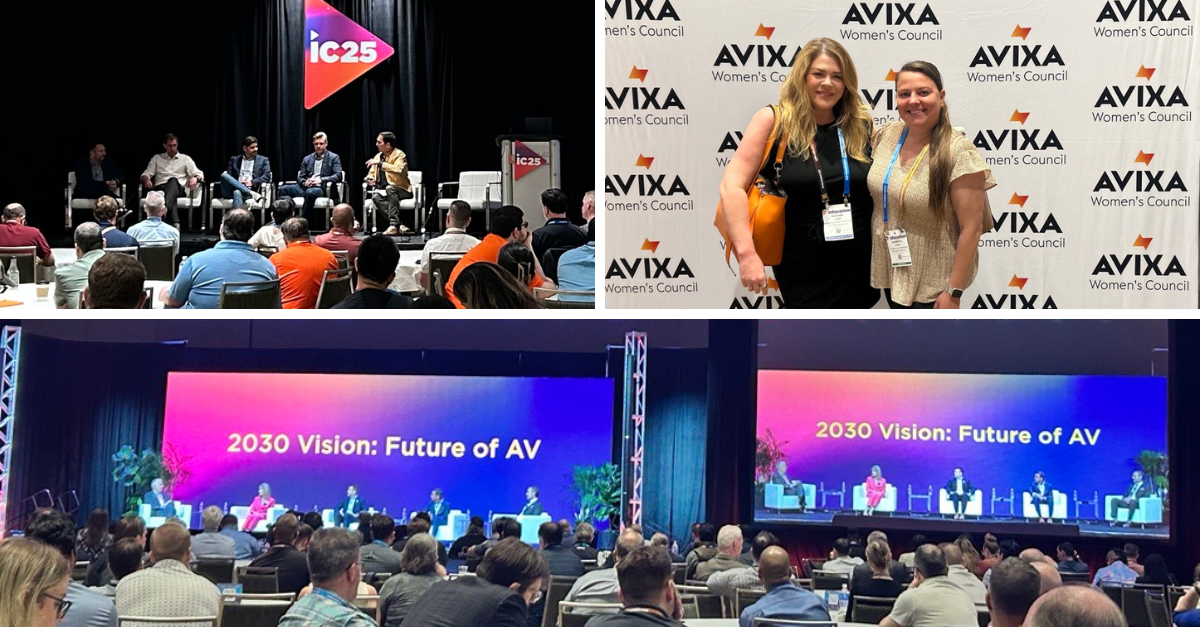NBC’s hit comedy show The Office features the everyday lives and work interactions of employees at Dunder Mifflin Paper Company in Scranton, PA.
Inside the Scranton branch are several outdated, dull, and dreary work settings. Since the first episode aired in March of 2005, we’re looking back on its 16th year anniversary to see how six new concept spaces we developed could have been incorporated if it were seeking an innovative hybrid environment.
Each concept space we created compares to a setting of the show to demonstrate ways Dunder Mifflin could have designed a better, more engaging work experience for employees returning to the office.
We hope you enjoy our good humor as we take you down this nostalgic journey of popular scenes from The Office.
Broadcast Studio vs. The Warehouse

Broadcast Studio (left): We developed a studio for interactive, 1:many presentations in an optimal environment. It creates an immersive experience for remote participants that includes high resolution cameras, studio lighting, an interactive whiteboard and custom views of both the presenter and content.
The Warehouse (right): The scene shown here is the roast of Michael Scott (regional manager of Scranton). Employees gather to listen to his introduction in the warehouse, the only space large enough for company-wide meetings.
How Broadcast Studio would help: While employees may not feel comfortable physically gathering in large spaces for company updates or town halls, executives can still host these meetings remotely – and in a professional, engaging way. Maybe employees would be more kind when roasting Michael if they had such forward-thinking technology available to them.
Collaboration Nest vs. The Conference Room

Collaboration Nest (left): Instead of a traditional conference room with inequities for remote participants, the “nest” optimizes sight lines in an open or enclosed space. Incorporating technology including 360-degree cameras at the center of a circular setting creates greater flexibility for movement as the office space changes.
Conference Room (right): The conference room in The Office is used for ad-hoc meetings or brainstorm sessions. As you can see, this environment is uncomfortable and lacks technology. This is where Michael presents his brilliant Golden Ticket idea to his unengaged team.
How Collaboration Nest would help: The aforementioned Golden Ticket idea mimicking Charlie and the Chocolate Factory didn’t start out so well as one of Dunder Mifflin’s top clients received all the golden tickets. Maybe if Michael had engaged his team more effectively, both those remotely and in-person, they could have come up with a limit one per customer solution?
Connect Rooms vs. Ryan’s Janitorial Closet Office

Connect Rooms (left): These private 1:1 collaboration spaces are web conferencing compatible and incorporate displays or BYOD (bring your own device). Connect rooms support four postures: standing, perching, seating, and lounge settings. Optimal acoustics and lighting create a professional 1:1 collaboration.
Ryan’s Janitorial Closet Office (right): One of Dunder Mifflin’s sales employees is moved to the janitor’s closet because he is unable to focus at his desk (AKA he was playing games on his computer and was punished by interim boss Jim Halpert). Although this is clearly a joke and not a practical location in any organization’s office, it shows how uncomfortable and inadequate private spaces can be.
How Connect Rooms would help: Instead of sending Ryan to the janitorial closet, he could have benefited from a private space with a range of postures to keep comfortable and focused. Since many people are struggling to focus remotely right now, a private area to get some heads down work at the office would greatly benefit employees. Who knows whether a more focused environment would have helped Ryan prevent his personal downfall in misleading Dunder Mifflin’s shareholders.
Pitch Room vs. Chili’s Meeting

Pitch Room (left): This space was designed for an immersive sales pitch with a remote client by maximizing the visibility and interaction of all participants. The dual zone presentation space allows the presenter and team to be seen simultaneously through two dedicated cameras along with content sharing. Like the broadcast studio, cameras, lighting, interactive collaboration software and whiteboards are all present to create the most dynamic setting.
Chili’s Meeting (right): This scene shown here is the famous sales meeting Michael and Jan from Dunder Mifflin have with the representative of the county. Michael attempts to land him as a new customer by telling jokes, eating baby back ribs, and having Awesome Blossoms. Despite the meeting experience, Michael is successful in signing a new client.
How Pitch Room would help: Not many sales pitches are taking place in-person these days, albeit in restaurants. The Pitch Room’s unique design intent allows innovative presentations and sales pitches to take place remotely while providing an equitable experience for all participants. The professional yet interactive environment is perfect for any type of sales pitch, whether it’s formal or casual.
Café and Flex Meeting Zone vs. The Kitchen and Break Room


Café (top left) and Flex Meeting Zone (bottom left): The work café is the social hub of the space that supports collaboration and socialization. People touchdown here throughout their day as a place to meet and work. The adjacent, enclosed meeting zone allows you to entertain guests in a private setting with presentation and optimal acoustics, while maintaining access and visibility to the work café.
Kitchen (top right) and Break Room (bottom right): In the show, the kitchen and break room serve as the main social spaces where small gatherings and parties take place. However, these spaces are not close by in proximity and are inflexible and uninspiring.
How Café and Flex Meeting Zone would help: An open, casual lounge area rather than Dunder Mifflin’s small, outdated kitchen would encourage employees to socialize and collaborate. The Finer Things Club (pictured on the bottom right) would enjoy the enclosed meeting room rather than the break room.
Open Flex Space vs. The Megadesk

Open Flex (left): The open flex space gives employees the ability to easily reconfigure their environment to suit the work at hand. Mobile technology, desks, tables, carts, screens and boundaries all are easily relocated for impromptu collaboration sessions.
Megadesk (right): Dwight, one of Dunder Mifflin’s sales representatives, creates a Megadesk while his coworker is out for paternity leave. His creation combines three regular desks in The Office to form a large work environment that doesn’t promote inner office collaboration.
How Open Flex would help: Having a hyper flexible open workspace with user-configurable furniture, technology and boundary solutions means that Dwight could transition from focused to collaborative work – a superior solution to Megadesk. With open flex environment, Dwight wouldn’t have alienated himself with his coworkers and need to fish his stapler out of Jell-O.
Reimagine Your Own Office
We hope you enjoyed our trip down memory lane of the most memorable moments from our favorite sitcom. Although The Office’s work environment is quite outdated, the parallels between its space and our concept spaces help show the value in reimagining your office.






